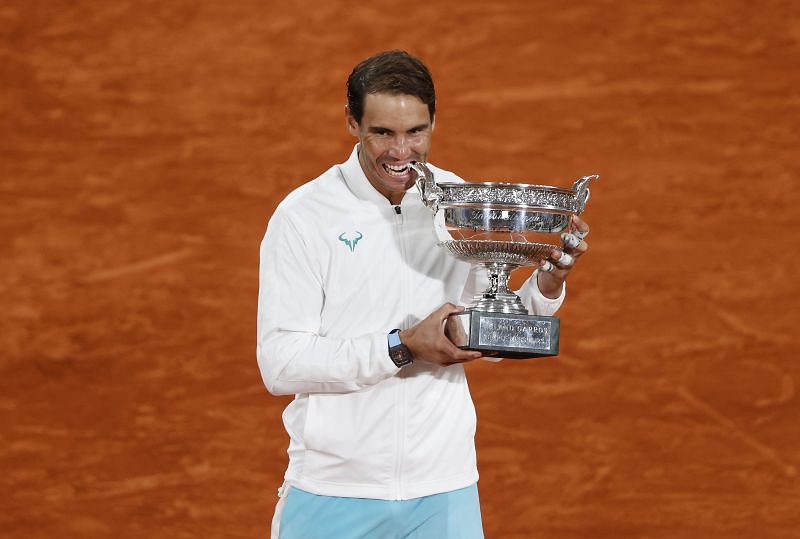
Rafael Nadal: The GOAT of tennis, and also the GOAT of dealing with fear
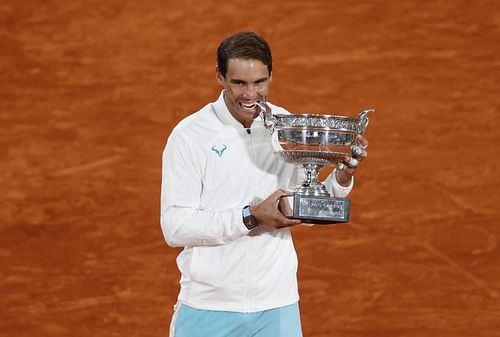
What does fear look like in sport?
That might sound like a funny question to ask right after the epic beatdown inflicted by Rafael Nadal on Novak Djokovic in the Roland Garros final. After all, there was certainly no hint of fear in the fierce backhands that Nadal crunched past Djokovic all match, or in the calm dinks that he put away into the open court whenever the Serb attempted a drop shot.
Heck, even Djokovic didn't really betray any fear during the match. In the first couple of sets he was as emotionless as a zombie, and in the last he was as thunderously angry as a Thor who had just lost his hammer. There may have been indifference and insanity by turns on Djokovic's face, but never fear.
What I am talking about is something that is far more subtle, and far less memorable in the grand scheme of things. And it usually tends to come when you least expect it, threatening to derail even the best-laid and best-executed plans.
In the first two hours of the blockbuster showdown on Sunday, Rafael Nadal played some of the most physics-defying tennis you'll ever get to see. Nadal was here, there, everywhere; at one point he legitimately looked like a flying superhero that couldn't possibly make a mistake even if he tried.
It was claycourt artistry at it its most dizzyingly high peak, and it almost made you want to pinch yourself just to make sure it was not a dream.
Nadal soon went up two sets and a break, which meant the finish line was clearly in sight. And anyone who didn't know the history of the two men would've blindly bet on a straight-sets Nadal win at that point.
But as it turned out, that was the moment when fear - the subtle, unmemorable kind - reared its head.
Rafael Nadal and the moment of danger - as there always is against Novak Djokovic
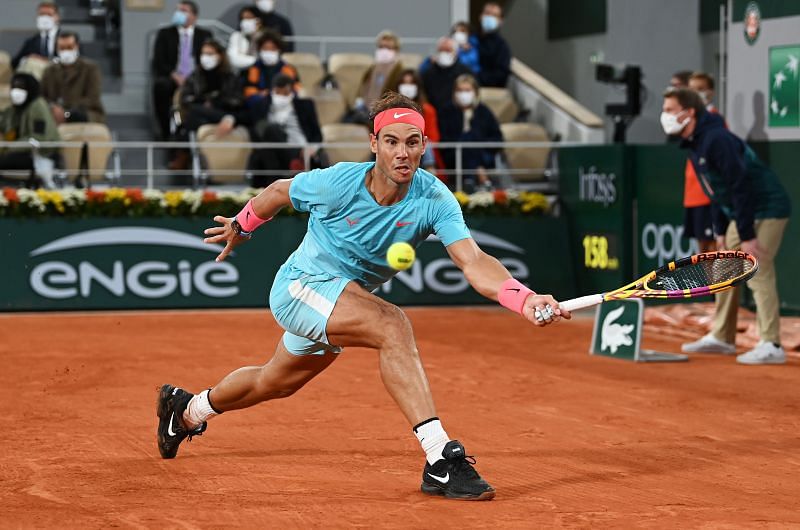
We know, and Rafael Nadal knows, and probably even the last grain of dust on Court Philippe Chatrier knows, that Novak Djokovic is most dangerous when his back is against the wall. No matter how badly he may have been playing up to that point, the Serb somehow finds his best tennis the moment he gets the feeling he has nothing to lose.
There was also the weight of history that would've undoubtedly entered Rafael Nadal's mind at that point. His 13th Roland Garros title - and 20th Slam overall, to tie Roger Federer's record - was within touching distance. All of his preparations, heartbreaks and dreams had led to this point; he was now the master of his own destiny, and he just needed to take that one final step.
But have you ever tried extending your arm towards something you've wanted with all your heart, and found it to not be shaking?
Serving at 3-2 in the third set, Rafael Nadal let that very natural human emotion of fear manifest itself in his play. His arm tightened up and he put in a less than sharp game to get broken for the first time in the match. And at around the same time, the beast on the other side of the net seemed to be awakening.
The next game took on a completely different complexion to what had happened throughout the first two hours of the match. Novak Djokovic, now in full battle roar, started throwing his entire body into every single shot, hell-bent on piercing through Rafael Nadal's defenses. And Nadal, well, he did what any human would do: he took a step back.
The Spaniard started hitting just a little bit shorter, and a little more safe, allowing Djokovic to take control of the points earlier. In the first two sets Rafael Nadal had been hitting his forehand with supreme authority, going down the line at will and generating unreal depth even from defensive positions. But mid-way through the third set he started going crosscourt almost exclusively, and Djokovic took full advantage.
Rafael Nadal did manage to hold serve for 4-4, but when he failed to take his break point opportunity in the next game, there seemed to be a clear shift in momentum.
Nadal had gone from being within touching distance of No. 20, to serving to stay in the third set. And there was Novak Djokovic, he of the millions of impossible comebacks, breathing fire through his nose across the net. Who would not be scared?
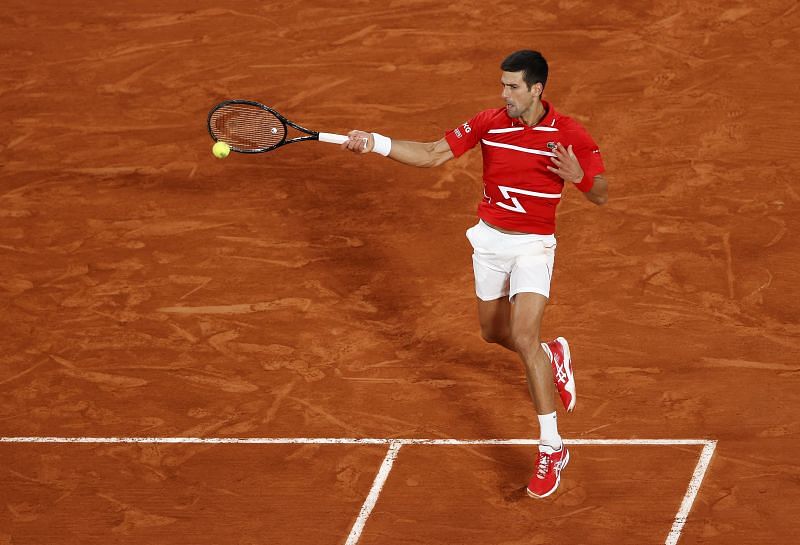
The Spaniard lost the first point of the 4-5 game, and you could sense that something was about to give. Then on the next point Nadal got into a typical forehand-to-backhand exchange with Djokovic, the kind that hasn't always gone in his favor, and it seemed like the writing was on the wall.
Except that this time the point did go in his favor. Nadal trusted his old faithful - the crosscourt forehand - and Djokovic, in his bid to take control, pushed his backhand just wide. And just like that, the moment of danger had passed.
Rafael Nadal loosened up from that point, the forehand started flowing a little more freely, and 15-15 soon became a hold to 15. At around the same time the air seemed to be going out of Novak Djokovic; the Serb got broken in the very next game, and before you knew it Nadal was serving for the championship.
This time, there was no fear in the Spaniard's play. He had played through the most tricky part of the match and come out unscathed, and he was also helped by the fact that Djokovic no longer seemed interested in extending the match. A love hold, punctuated by an ace, gave Rafael Nadal his mind-boggling 13th French Open title. And that is probably all that the history books will remember from the match, given how one-sided it was for the most part.
But no matter what the scores or the stats say - the Spaniard made a ridiculously low 14 unforced errors and won nearly 40% points more than his GOAT peer - the 2020 Roland Garros final was another reminder of just why Rafael Nadal is so good on clay.
Sure, the lefty forehand, the high topspin and the patient point-construction are all important factors. But it is Nadal's ability to withstand the most inspired play of his opponents, and to conquer his own fears and self-doubts, that make him such an unparalleled champion on terre battue.
Fear doesn't cripple Rafael Nadal the way it does others, because he never stops trusting his strengths and percentages. And more importantly, he never stops hustling.
Despite being well into his mid-30s, and despite being half a step slower than he was in his prime, Rafael Nadal still managed to retrieve more of Novak Djokovic's would-be winners than any other player on tour would have. The man just never stops running - come sun, rain or pandemic.
From the looks of things, he will never stop running to win the GOAT race either. Or at least that's what we thought, until he dismissed all such notions in the post-match interview.
What effect does Rafael Nadal equaling Roger Federer have on the GOAT debate?
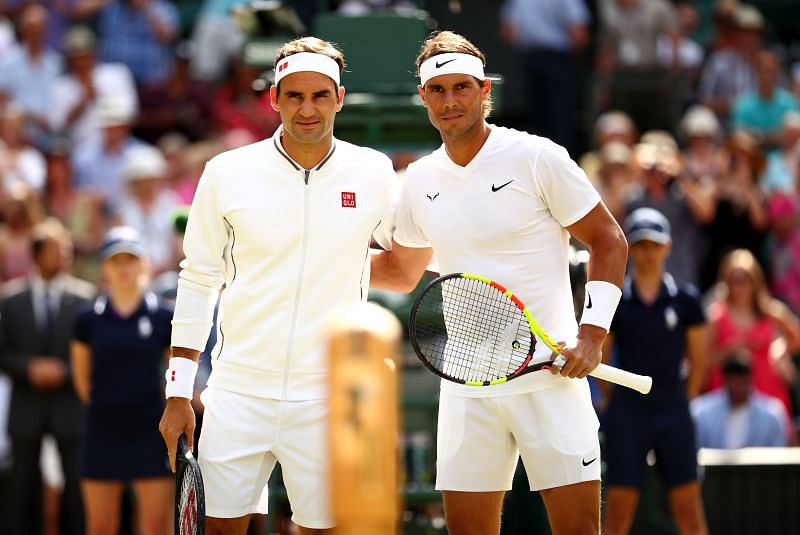
Rafael Nadal was asked immediately after the win what it meant to equal Roger Federer's record tally of Slams, but he completely played it down. The 34-year-old insisted that for him winning Roland Garros was far more important than winning No. 20, and that this wasn't the time to be speaking about records.
But to be perfectly honest, did Rafael Nadal really need to win his 20th to cement his place as a GOAT? Roger Federer may have been at the top of the pile all these years, but only his rabid fans considered him to be the 'one true GOAT'. For objective observers, it has been a three-way tie for a while.
There is a strong argument to be made that Roger Federer, Rafael Nadal and Novak Djokovic are the three greatest male tennis players of all time, and that ranking any one above the other depends entirely on your personal preference. In other words, Nadal was just as good as Federer even when he had one Slam fewer, and he will be just as good as Djokovic even if the Serb eventually surpasses them both.
And he will always have one thing that the other two don't. For every impressive stat that the opposing camp throws up, the Nadal fans can just reply - 'But does your man have THIRTEEN (and counting) Slams at a single event?'
Rafael Nadal's claycourt record is something that cannot adequately be described in words. It transcends tennis and occupies a special position in the list of dominant feats across all human endeavors, let alone just sport. But we knew that already even before this year's French Open; how did his 13th title change the way we look at his legacy?
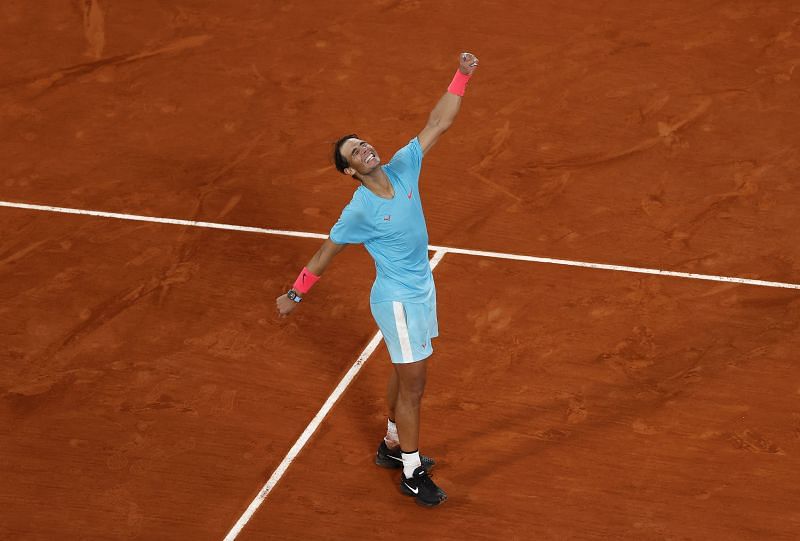
You only had to look where Rafael Nadal looked after wrapping up the match - skyward - to get the answer. There was a roof on Court Philippe Chatrier this year, which was supposed to give an automatic advantage to his opponents. The tournament was also played in decidedly alien conditions, with the cold autumn weather inhibiting Nadal's topspin rather than enhancing it the way the summer air usually does.
The slower than normal balls, the lower bounce, the lack of claycourt preparation - everything seemed against Rafael Nadal at Roland Garros this year. Which is why many (including yours truly) had picked Novak Djokovic as the favorite going into the final.
But just like he had in that pivotal 4-5 game in the third set, Rafael Nadal batted away all the doubts by putting his head down and trusting his strengths. He ran, he fought, he hustled, and he showed the world just how fear can sometimes be a good thing.
Maybe if Novak Djokovic had taken a leaf out of Rafael Nadal's book and played with more fear - at least in the first couple of sets - he might have had a shot at winning the match on Sunday.

The Serb's demeanor and playing patterns early on seemed to suggest he was completely in control of the situation. We saw something similar in his semifinal match against Stefanos Tsitsipas, where Djokovic didn't start raging and stomping despite squandering a match point and letting the contest go to a fifth. That ended up serving him well, probably because of who he was playing; the World No. 1 managed to steady the ship in time and win the decider comfortably.
But that zen-like calmness probably robbed Novak Djokovic of the urgency that was required to tackle the Rafael Nadal challenge. In the final Djokovic never changed his visibly misfiring tactics, and he never seemed willing to get out of his comfort zone.
Djokovic kept going for drop shots just because they had worked in his previous matches. He also kept trying to bully Nadal from the baseline despite having several net approaches open, and kept going crosscourt with his backhand even though the Spaniard's forehand never seemed in danger of breaking down. The result? 52 unforced errors and a bagel.
Neither of those things is what you expect from a man who had gone 37-1 for the year up to that point. This was as thorough a reversal of fortunes as any we've ever seen in a Big 3 matchup, and you have to wonder whether overconfidence played a part in it.
In that sense, the match on Sunday could serve as yet another important reminder for all players in the future: if you face Rafael Nadal at Roland Garros, you better play with the appropriate amount of fear. Because if you don't, you will get bagelled - even if you are the World No. 1.
That's what Rafael Nadal has earned for dealing with fear so magnificently all these years. He has himself become a source of fear, unlike any that has ever existed in sporting history.